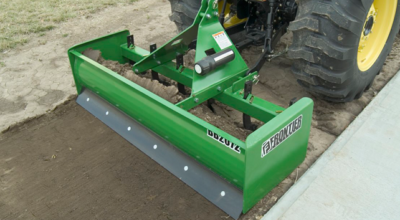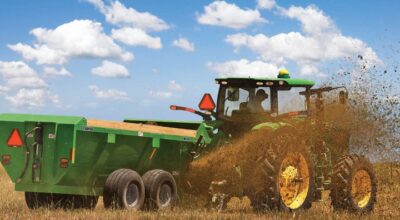Ruts and tire tracks can disrupt your daily tasks and overall comfort while working, but with a rear blade from John Deere, you can fill them and get on with your to-do list. Furthermore, you can potentially boost your productivity level and give yourself one less thing to worry about out in the field. Let’s take a look at how to fill ruts and tire tracks using a rear blade attachment.
Prepare the Machinery
The first step of this process is to attach the rear blade to a utility tractor. To further enhance productivity, operators can also turn their rear blade into a box blade by using bolt-on endplates – this will enable more control while moving soil to backfill tracks and ruts.
Knock Down the Ridges
Run the rear blade over the tire tracks multiple times, both parallel with them and at an angle. This process will knock down ridges and move the soil around to fill rutted areas, resulting in more even surfaces.
Examine the End Plates
If you’re using end plates, make sure they are carrying more soil to fill in the deeper ruts. Additionally, verify that the rear blade is not digging into the ground too deeply as you work.
Get the Most Out of the Process
Before you begin filling in ruts and tire tracks, it’s important not to start the project too soon. In other words, take the time to gauge how wet the soil is before you start. If the ground is too wet, you’ll create new tire tracks in the process of smoothing out old ones. The soil should be dry enough that you can move it around effectively, eliminate ruts, and avoid creating new ones as you work.
Finally, make sure you read the operator’s manual before you begin using your equipment. This will help you abide by standard safety instructions with your rear blade and utility tractor alike.
Keep in mind that Frontier has more than 600 different implements you can use for tasks such as this, and you can learn more about all of them from your John Deere dealer.
If you have any questions about utility tractors or other pieces of Deere equipment, you can contact your local John Deere dealer.
If you enjoyed this post or want to read others, feel free to connect with us on Facebook, Pinterest, or Twitter!


